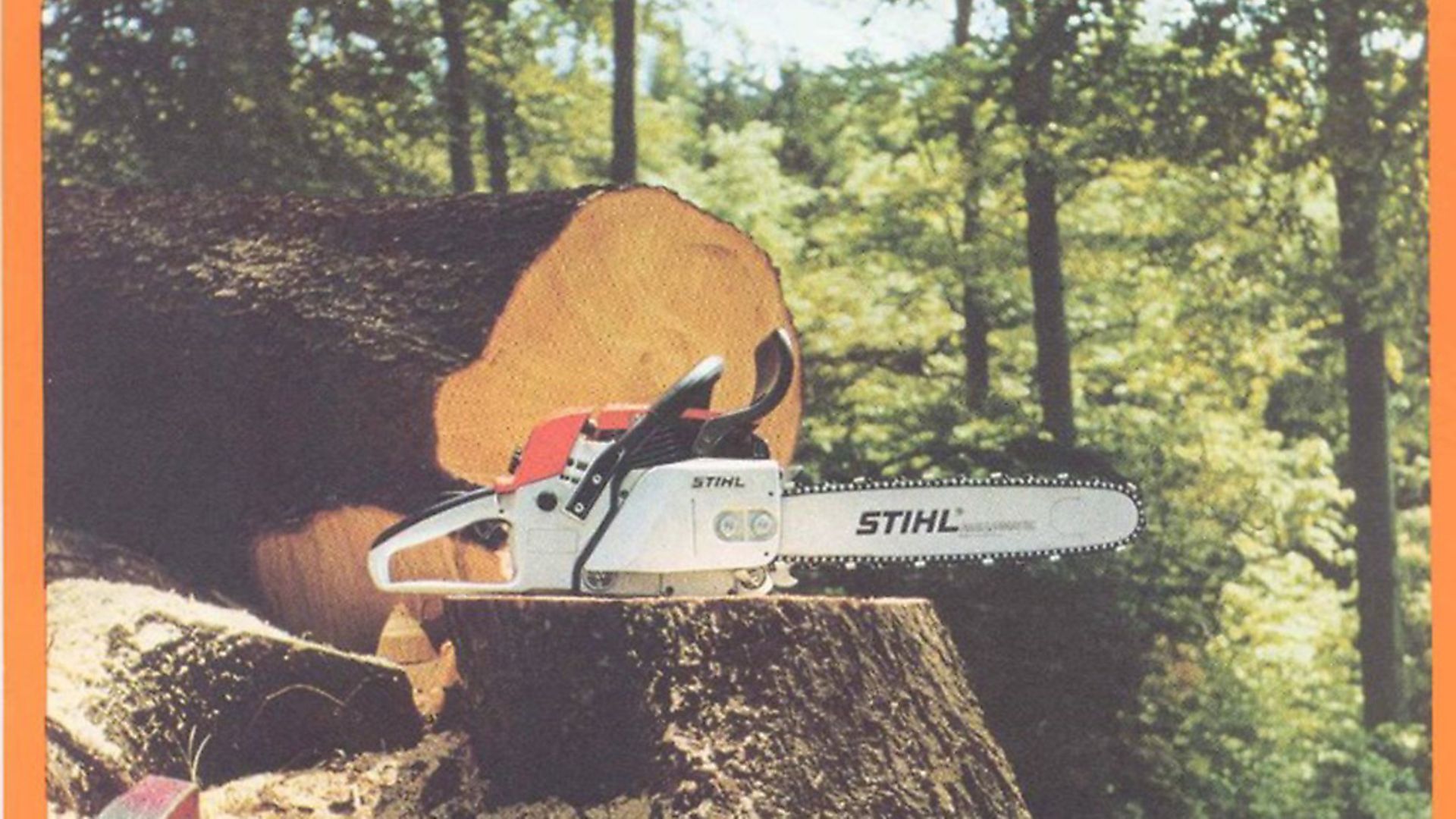Stihl has been making chainsaws since the 1920s and smallholders with timber simply love the Farmboss, says Kevin Alviti

It is not an understatement to say that the chainsaw was a revolutionary tool. Few machines in the modern era have done more to change the shape of our surroundings than the chainsaw. Anyone who has ever taken down a tree of any size with an axe or a two-man saw will already have realised what a labour-saving device it is.
Aldo Leopold wrote in A Sand County Almanac: “I have read many definitions of what is a conservationist, and written not a few myself, but I suspect that the best one is written not with a pen but with an axe.”
And I am sure that description would now include the chainsaw as well. Conservation isn’t saving everything, a mistake made of many. And although I know many mistakes have been made by the hands of a man holding a chainsaw there have also been many successes too.
For many, a chainsaw is the single tool that can suddenly give the feeling of independence on a smallholding. It creates the ability to cut, log and store firewood needed to heat a home through winter, or clear scrub for farmland, tidy away fallen branches, cut timber for building, or do some rough carpentry. It is a gateway tool to self-reliance.
Stihl seems to have been at the forefront of this revolution. The firm was created in 1926 by Andreas Stihl, at which point it manufactured tree felling and trimming tools. Among those were some of the first chainsaws, but weighing in at over 50kg each they were meant for two men to handle and were for vertical yard work. One that could be used for tree felling was developed in 1929, but weighing 46kg it was still too much for one man to handle.
It wasn’t until the 1950s, with the invention of the manually adjusted swivelling carburettor, that the first single person chainsaws came into being. Now the saw could be used vertically or horizontally and at just 16kg one person could handle it. By the late ’50s the weight had fallen considerably — to 12kg — and other innovations like chain lubrication and sound suppressors made them much more manageable tools to use.
In 1978 Stihl set up an official subsidiary in Woking. Carmen Rosten, content marketing executive for Stihl UK, comments: “We saw a significant rise in sales after the great storm of 1987. In 1991 we moved to Camberley, which is where we are today. Since then we’ve gone on to continue to develop our products. Our latest line is a range of battery powered cordless machines to sit alongside our petrol and electric ones.”
The 038, or Farmboss, has a single-cylinder two-stroke engine giving out 3.3kW of power. It weighs 6.6kg, which by modern standards makes it a rather heavy saw. Interestingly, although it was never officially given the Farmboss name in the UK, this was adopted from the American version of the saw and it seemed to stick. This model saw was manufactured from 1980-85 with many different models following on.
Alex Laurie, a forester based in Shropshire, speaks fondly of the machine: “Anti-vibration wasn’t a huge factor in those days, but as an agricultural workhorse it took some beating. I have newer saws that I know won’t last as long as this one. It’s heavy, but it can cut all day — it has plenty of grunt.”
Chris Flux, a smallholder from West Wales, also loves the saw that aids his firewood business.
“I still use mine daily,” he says. “It’s heavy compared to some of my newer saws, but just brilliant for logging up. The saw still cuts through wood like butter and I have a feeling it’ll never die.”
David Ashton, a tree surgeon and arborist from north Herefordshire, also has one forming a part of his large arsenal of chainsaws.
“It was my father’s saw and I still turn to it when I have a lot of logging up to do. It’s perfect for that job as it has lots of power and enough weight to let the saw do the work for you, I just have to hold it on the log. I thought it was a saw worth keeping and really looking after so I actually had it completely stripped and rebuilt a few years ago.”
The Farmboss and its maker Stihl seem to have their fair share of fans out there.
A word of caution, though. Regardless of what chainsaw you are using, proper training and instruction are vital. They look deceptively simple to use, but one wrong move can have catastrophic results.
Image(s) provided by:
Archant







